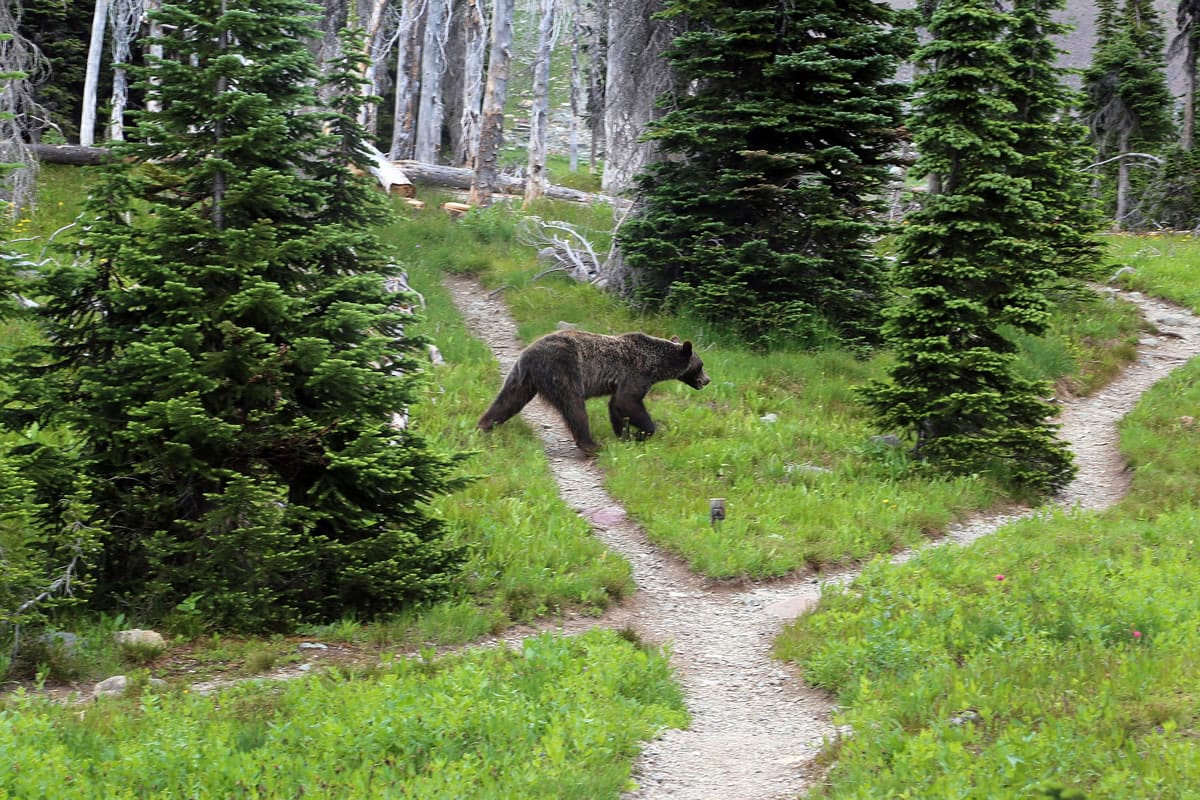HELENA, Mont. — Growing numbers of grizzly bears venturing east from the Rocky Mountains are attacking more domestic cattle and sheep.
Montana’s livestock-loss program has reimbursed ranchers for 42 animals killed by grizzlies so far this year — eight more than in all of 2014. That total does not include the 22 cattle lost this year to bears that have not yet been claimed.
One report came from as far east as Floweree, Mont., about 100 miles northeast of Helena, George Edwards of the Montana Livestock Loss Board said Tuesday.
Wyoming officials expect a less drastic increase in livestock attacks and the range of roaming by grizzly bears this year. “We’re having what I guess you would call a steady increase in livestock depredation as grizzly population and area expand,” said Brian DeBolt, Wyoming’s large carnivore conflict coordinator.
This is only the third year Montana has offered financial relief to ranchers who lose livestock to grizzlies, but Edwards said the state has long been encouraging people to report bears’ interactions with livestock.
The number of animals killed this year amounts to a spike amid a long-term downward trend of grizzly attacks on livestock along the Northern Continental Divide, state and federal officials said.
“These numbers vary from year to year anyway, and more reporting may be happening now because there’s reimbursement,” federal grizzly recovery coordinator Chris Servheen said. “But the big picture is that we try to mitigate conflicts.”
Montana’s Northern Rockies Wildlife Manager Graham Taylor said measures taken during the last few years to electrify fences and fortify food storage have helped to reduce the number of bear-livestock conflicts in parts of Montana despite a growing number of grizzlies.
But other state and federal officials say that trend doesn’t hold true for ranches surrounding the grizzly population in the Yellowstone National Park region of Wyoming, Montana and Idaho. Idaho officials did not return calls for comment Tuesday.
Yellowstone sees most of Wyming’s grizzly-livestock interactions, DeBolt said. Conflicts have ranged from 77 reports in 2011 and 135 in 2012 to 113 in 2013. The state recorded 130 grizzly encounters with livestock in 2014 and, although Wyoming has used similar mitigation tactics as Montana, DeBolt said he expects an increase this year.
“We’ve made headway, but overall it’s increasing and I think it’s more of a function of bear numbers and distribution,” DeBolt said.
Scientists estimate about 1,000 grizzlies live in Yellowstone and another 1,000 live in the northern Rockies.
Like the population north of them, Yellowstone grizzlies have been migrating east, said Frank van Manen, leader of the U.S. Geological Survey’s Interagency Grizzly Bear Study Team. “Even though this range expansion is fairly faster than we anticipated, it’s still occurring little by little every year,” van Manen said.
Grizzlies kill less that 1 percent of the hundreds of thousands of cattle that now graze the northern prairies, Servheen said. The area was once prime grizzly bear habitat.
“That was in the time of Lewis and Clark, when there were millions of bison out there,” Servheen said.
The U.S. Fish and Wildlife Service is expected to decide this year whether to lift protections for the grizzly bear, a species currently classified as endangered.




